Archive for July, 2008
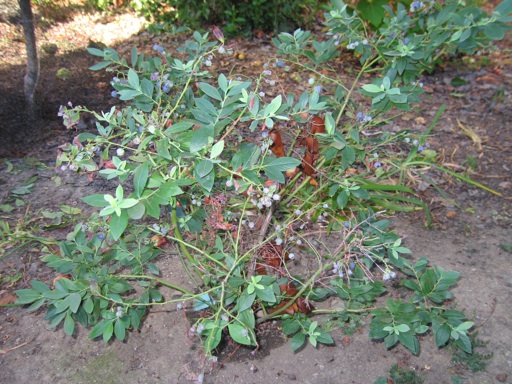
The surprise for me was learning that blueberries would even grow in California. About two years ago, I learned about Southern Highbush blueberries, which are a group of blueberries that were bred to grow and produce fruit in mild weather climates such as USDA zone 9. Southern Highbush Blueberries were developed in Florida. They include varieties with names such as O’Neal, Misty, Jubilee, Southmoon, and Sunshine. The one pictured above is a Sunshine bush growing in my yard.
I added a special acid soil mix to the planting sites and then supplemented with sulfur, because blueberries prefer acidic soil (pH 5.0-6.0). I planted about 7 bushes. They produce berries from June through August. They look healthy. But some of the plants produce a very small harvest (maybe 20-30 berries). And other plants produce many tiny berries.
Whenever a heat wave hits, the new growth gets sunburnt and wilts. Even when the weather is mild, the plants grow very slowly, even though they are getting regular watering from a drip system. Maybe I need to fertilize them more.
Despite the problems, I think they are a great addition to my garden. In this area, they are a novelty. I have never seen them growing in anyone else’s garden in the Bay Area. Plus, the berries are tasty and are great in pies and on cereal.
July 27 2008 | Blueberries | Comments Off on Blueberry Surprise
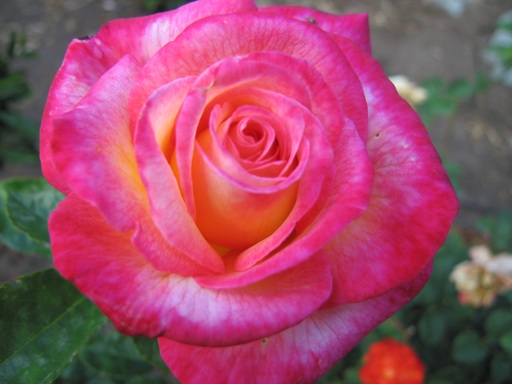
Last weekend, I purchased a new rose bush called Sheila’s Perfume from a local nursery. The flowers are extremely fragrant, which surprised me because many of the most attractive roses I have seen do not have much of a fragrance. I have heard that hybridizers focus more on looks than fragrance when developing new roses.
I am also impressed by it’s multicolored pink, orange, and white patterns. I have bought 3 new roses this year, but this one is my favorite right now.
July 27 2008 | Roses | Comments Off on Sheila’s Perfume Rose
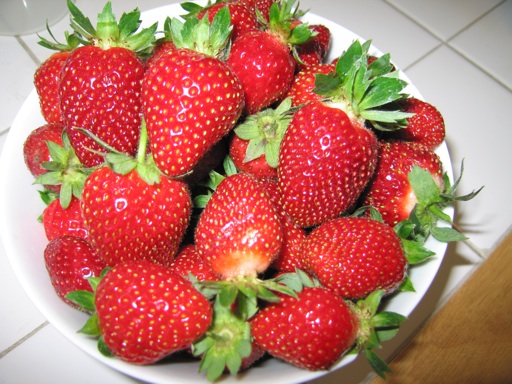
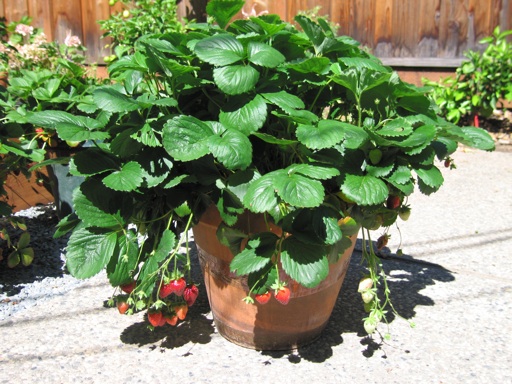
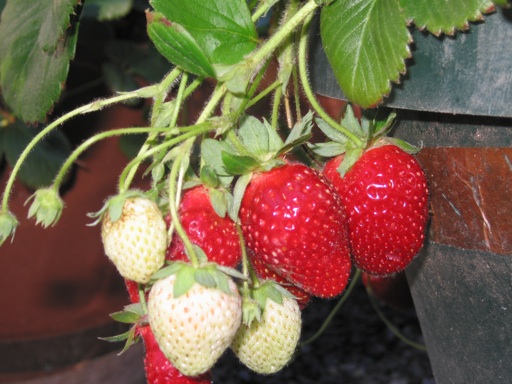
I have had a lot of luck growing Sequoia June-Bearing Strawberries in pots. Right now, they are full of ripe strawberries. The berries are so much tastier than what I typically purchase in a grocery store.
When I grew strawberries in the ground, snails ate the berries before they even turned red. I was reluctant to put snail poison near the fruit, and it washed away quickly anyway. A few years ago, I started growing strawberries in pots that have copper tape around the bottom. I have had very few problems with snails since then.
Back in May, I was harvesting strawberries every week. Then in June, the June-Bearing strawberries suddenly stopped producing strawberries, even though I was watering every few days, and they looked healthy otherwise. Usually, the plants wilt if they are not getting watered at least that often.
I then tried fertilizing them with water soluble fertilizer every week. In about 3 weeks, the plants started getting the white flowers again, and now they are producing berries in abundance. I think that the nutrients may have leeched out of the soil in the pots.
Also, the plants are probably root bound in the pots and competing for nutrients and water. I probably put too many in each pot, although they don’t seem to mind as long as they are getting watered and fertilized regularly.
July 27 2008 | Strawberries | Comments Off on June-Bearing Strawberries
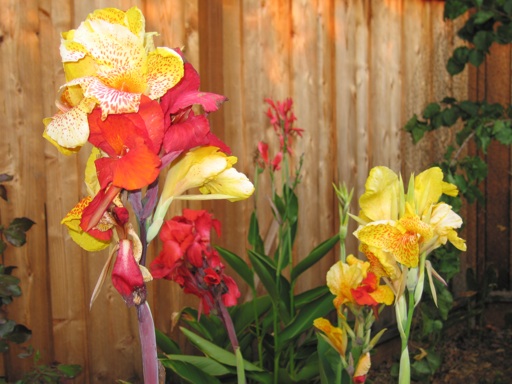
I have always been fond of cannas. I am partial to their colorful and asymmetrical flowers as well as their large, tropical-looking leaves. When I first started growing cannas, I couldn’t get them to bloom. I later realized that they weren’t blooming, because I wasn’t watering them enough.
I live in a region that only gets about 15″-20″ of rain per year, and most of that rains falls from November through March. It hasn’t rained at our house this year since late February. When I water them at least every few days, cannas grow rapidly and bloom in a few months, even though I never fertilize them. As soon as they dry out, they stop growing. They seem to not like having their roots dry out during the growing season.
Because cannas like to be moist, they tend to attract snails. Snails eat the leaves while the cannas are growing, leaving an unattractive pattern of holes in the leaves. I haven’t been able to find an effective control for the snail problem. Putting copper tape around the base of each steam is not really practical, especially because the stems need to be cut to the ground as soon as they finish blooming. I don’t like to use liquid snail poison or pellets, because they wash away quickly after a watering. I have been hand picking the snails off the leaves.
I am not sure what these cannas are called. A friend gave them to us.
July 19 2008 | Cannas | Comments Off on Canna Display
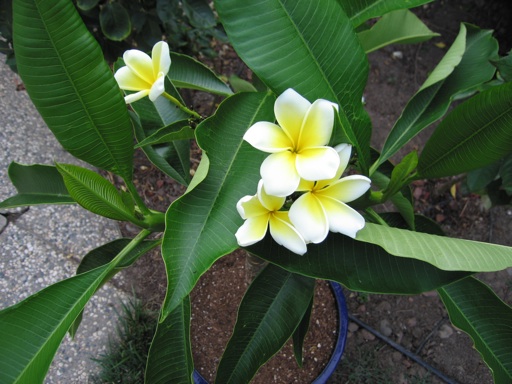
This is a picture of a plumeria plant I have growing in a pot. It just started blooming for the first time a few weeks ago, and the fragrance of the flowers is incredible. Plumeria flowers are used to make leis in Hawaii. Plumeria, common name Frangipani, is a tropical plant that is native to Central America. I am stunned that we have managed to get it to bloom here in northern California.
I bought it at a grocery store 3 years ago. It was about 7″ tall when I bought it. It’s now about 2-2.5 feet tall. After transplanting it into a larger pot about 2 years ago, my partner fertilized it regularly with fish emulsion, an organic fertilizer. Since then, it has grown substantially.
Every winter, we take the pot indoors in November when the low temperatures start to fall below 40 degrees. It’s a deciduous plumeria. So it loses its leaves every winter and becomes dormant. The label didn’t indicate what species of plumeria it is, but I’m guessing that it’s P. alba.
Last fall, the plant started forming buds, but the weather began to turn cold before they opened. All of the leaves eventually fell off. But the buds stayed on. About half of the buds turned brown and shriveled up during dormancy. The remaining buds have been opening now that the plant is growing again. This plant seems to thrive in the warm sunny days of summer in direct sunlight. And it does not seem to mind being indoors in the winter in a spot where it gets only indirect sunlight. I think deciduous plumeria could be grown in a pot in any climate that has a long, warm growing season.
July 19 2008 | Plumeria | Comments Off on Plumeria in a Pot
Next »






